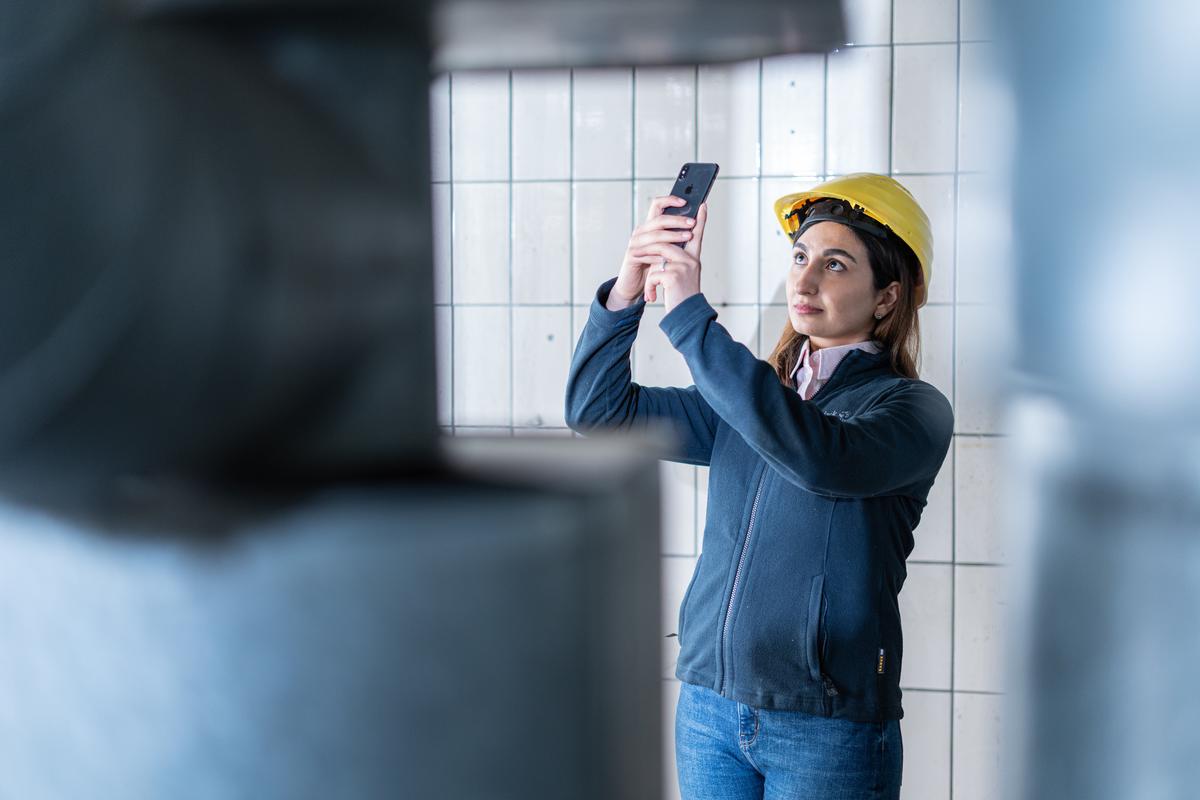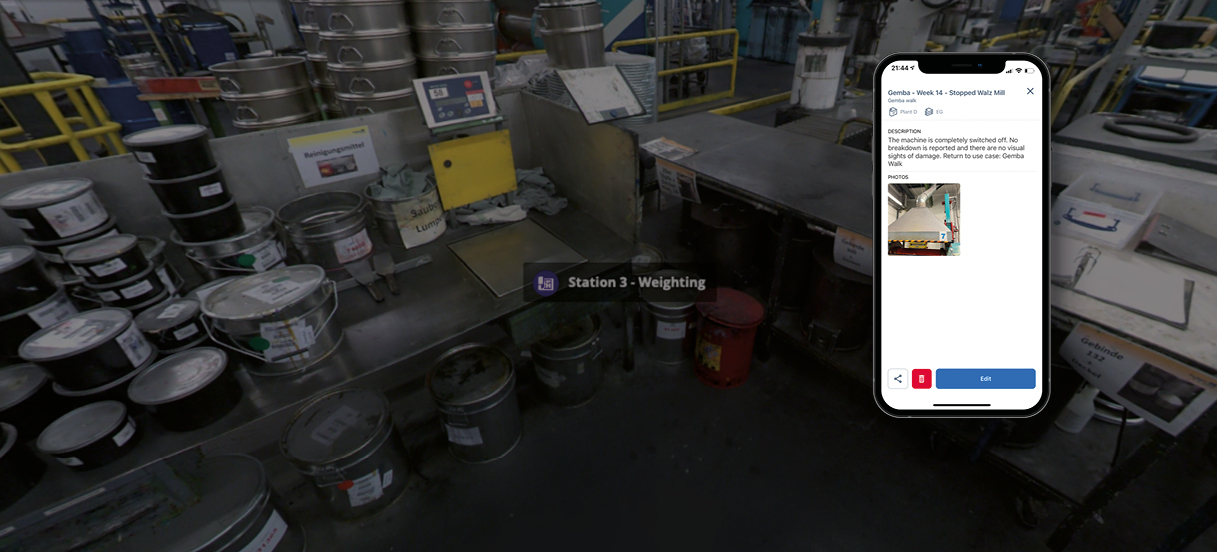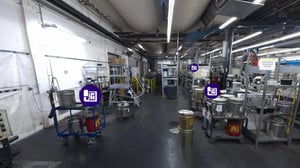Augmented reality technology holds many promises for manufacturing to help companies to improve workplace safety, measure changes, and review in-depth information about industrial processes in real-time. However, for a seamless AR experience indoors, a mobile user needs positioning technology to be able to locate themselves on a map. Without this, the digital twin and the physical environment cannot be synced by an AR-enabled device.
Even though mobile phones and tablets have an inbuilt GPS that provides position technology, that feature does not work indoors: inside a venue, GPS signals will be blocked, reflected by walls and cannot enter a room. The solution for this is indoor positioning technology, which uses a network of devices inside the venue to locate people or objects, such as beacons that are combined with wifi.
Indoor positioning technology requirements and challenges
Although this provides a precise indoor positioning experience, a network of hardware onsite requires the planning, installation and maintenance of such additional infrastructure. This means that additional investments and resources need to be made by a company that wants to realize a digital factory experience.
At this point, it should be noticed that the objective of indoor positioning technology is to provide just that: a blue dot on the map, or a latitude and longitude (X and Y coordinates) position indoors of a mobile user, replicating how GPS works outdoors. To provide a seamless augmented reality experience, additional positioning information is required, such as the orientation or the direction a mobile device is pointed at.

Another possible issue with current indoor positioning technology is scalability. This can quickly become an issue as most, if not all current AR solutions/SDKs come with some sort of low-scale re-positioning feature that can detect an area that has been previously prepared by the SDK and align content within that area. Those systems tend to cap out around the 200 sq m mark, which makes it unsuitable for larger venues.
Visual positioning as an alternative to indoor positioning
To overcome the challenges that come with indoor positioning technology, NavVis built its own scalable, accurate and infrastructure-less visual positioning technology. Infrastructure-less means that visual positioning technology does not require any additional infrastructure to be installed or maintained. Instead, it relies on the visual signals and the camera of a mobile device as the sensor.
Based on one to four pictures taken onsite by a mobile user that are sent to a server, the precise location and orientation information are sent back, so that a user can tap into a point of interest and other digital content that lives inside a digital twin.
NavVis’ Visual positioning technology not only provides a blue dot on a map, but also the full pose of the device, including the direction it’s pointed at. By computing all six degrees of freedom, visual positioning seamlessly connects to the needs of augmented reality as users would be able to point their device to a point of interest (POI) and pull data out of a digital twin associated with that object.
Additionally, NavVis’ Visual positioning AR SDK can scale up to any area, solving possible scalability issues and enabling AR in your digital factory underpinned by indoor location technology at scale.
Possible use cases for a spatially-enabled digital factory
Most AR apps provide isolated and spatially limited experiences. One example is augmented training applications, where AI is used to teach employees technical skills, or provide multi-step tasks to work through a problem step by step. Such training applications usually work on only one machine or workplace.
NavVis’ visual positioning technology could potentially be rolled out to a complete factory shop floor, so that information can be accessed onsite based on the exact position and workstation at hand.
Visual positioning can also underpin remote collaboration: if it’s not possible for a technician to go and fix an issue onsite, but immediate assistance is needed to solve an issue, remote collaboration tools can provide a common interface to understand and solve a possible problem. Being able to localize a problem quickly using indoor positioning will help add a spatial context and access to important POIs that can help to find a quick solution on the spot, without losing time moving around resources or co-workers.

Finally, location technology will help assembly planning managers and head of operations to implement new best practices in a facility quickly. AR can help with doing onsite concept validation and give feedback on a replanning concept based on the viewpoint of the shop floor. This will not only save time, but also help to disseminate new information quickly and ultimately help drive efficiency.
Wrapping up
Would you like to know more about creating augmented reality experiences in your digital factory? With the NavVis SDK and Developer API, you can start building AR applications on a factory scale. Contact us for more information to get started with building AR applications for your digital factory.
Eric van Rees is an independent tech writer. He is interested in covering new 3D hardware and software applications and is eager to learn more about web development in his free time.
